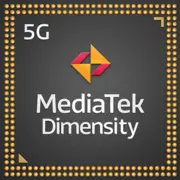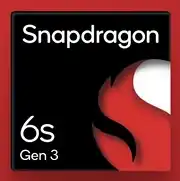MediaTek Dimensity 7020

MediaTek Dimensity 7020: A Balance Between Performance and Affordability in 2025
Overview of the Mobile Processor for Mid-Range Smartphones
Introduction
The modern mobile processor market offers dozens of solutions to suit various tastes and budgets, but finding the optimal balance between price, energy efficiency, and performance is not easy. The MediaTek Dimensity 7020, introduced in 2024, is the company's answer to user demands for a smartphone with 5G support, smooth gaming performance, and advanced multimedia features without the high prices of flagship chips. In this article, we will explore what this processor is capable of, who it is suitable for, and how it compares to its competitors.
1. Architecture and Technology Process: The Basis for Efficiency
The Dimensity 7020 is built on a 6nm technology process from TSMC, which remains relevant in 2025 for budget and mid-range devices. This process provides a good balance between power consumption and performance.
CPU: 8-Core Hybrid Structure
- 2 High-Performance Cortex-A78 Cores with a frequency of up to 2.2 GHz: responsible for resource-intensive tasks (gaming, video rendering).
- 6 Power-Efficient Cortex-A55 Cores with a frequency of 2.0 GHz: handle background processes, calls, social media.
This architecture allows for flexible load distribution: for example, both "big" cores are engaged in gaming, while only the small cores operate during web browsing.
GPU: IMG BXM-8-256
The graphics accelerator from Imagination Technologies supports Vulkan 1.3 and OpenGL ES 3.2, ensuring compatibility with most games from Google Play. However, it falls short compared to the Mali-G68 (Huawei Kirin 980) and Adreno 642 (Snapdragon 7 Gen 1) in tests involving complex scenes.
Cache and Memory
- Supports LPDDR4X/5 RAM up to 12 GB.
- UFS 3.1 for storage: reading speed up to 1.2 GB/s.
2. Performance in Real-World Tasks
Gaming
- In Genshin Impact at medium settings (1080p, 30 FPS), the processor shows stability, but framerate drops occur when increasing to 60 FPS.
- Call of Duty: Mobile and PUBG run at high settings (60 FPS) without issues.
- For casual games (Candy Crush, Among Us), the power is more than sufficient.
Multimedia
- Supports displays with a refresh rate of 120 Hz and a resolution of 2520×1080.
- Hardware decoding of 4K@60 FPS video (H.265, AV1).
- The built-in audio processor enhances sound quality in headphones with support for LDAC and aptX HD codecs.
AI Tasks
- Thanks to APU 3.0 (AI Processing Unit), the processor accelerates scene recognition in the camera, automatic photo retouching, and the operation of voice assistants. For example, photo processing in Google Photos takes 15% less time than on the Snapdragon 695.
Power Consumption and Heating
- The 6nm process and optimization of the A55 cores allow smartphones with the Dimensity 7020 to last up to 14 hours with moderate use.
- In stress tests (e.g., 30 minutes in Genshin Impact), the device temperature does not exceed 42°C, but for prolonged gaming, models with cooling systems are recommended.
3. Built-in Modules: The Future of Connectivity
5G Modem
- Supports Sub-6 GHz with a maximum download speed of up to 2.77 Gbps.
- Frequency aggregation (3CC Carrier Aggregation) for stable connections in urban areas.
Wi-Fi and Bluetooth
- Wi-Fi 6 (up to 1.2 Gbps): compatible with AX standard routers.
- Bluetooth 5.3 with Dual Audio support (simultaneous connection of two pairs of headphones).
Navigation
- GPS, GLONASS, Galileo, QZSS: positioning accuracy up to 1 meter.
- No support for satellite communication—this differentiates the Dimensity 7020 from flagship chips like the Dimensity 9300.
4. Comparison with Competitors
MediaTek Dimensity 7020 vs Snapdragon 7 Gen 2
- Snapdragon 7 Gen 2 (AnTuTu ~550k) is 12% faster in gaming thanks to the Adreno 710 but is more expensive: smartphones based on it start from $450, while devices with the Dimensity 7020 start from $300.
- The Dimensity 7020 wins in energy efficiency: 6nm vs. 4nm for the Snapdragon, but the latter better handles multitasking.
Exynos 1380 (Samsung)
- Exynos 1380 (AnTuTu ~500k) shows comparable performance but is less optimized for gaming. However, its modem supports mmWave 5G.
Apple A16 Bionic
- In single-core tasks, the A16 (Geekbench 6 Single-Core ~1950) outperforms the Dimensity 7020 nearly twofold, but this is a processor from a different price segment (iPhone 14 starts at $799).
5. Use Cases
Gaming
Suitable for mobile gaming enthusiasts who are not looking for ultra-settings. It is recommended to enable game mode in smartphone settings to prioritize resources.
Daily Tasks
- Smooth interface operation, quick app loading.
- Simultaneous handling of 5-7 tabs in a browser, messaging apps, and music streaming.
Photo and Video
- Supports cameras up to 108 MP and recording 4K@30 FPS.
- AI video stabilization EIS 3.0 and night mode with noise reduction.
6. Strengths and Weaknesses
Strengths:
- Optimal price for devices ($300–$450).
- Energy efficiency for long usage.
- Support for modern communication standards (5G, Wi-Fi 6).
Weaknesses:
- GPU performance is weaker than that of Snapdragon 7 Gen 2.
- No support for 144 Hz displays or 2K resolution.
7. Practical Tips for Choosing a Smartphone
1. Cooling: Look for models with a vapor chamber or graphite coating.
2. Battery: Ideally, 5000 mAh and fast charging 33 W+.
3. Display: AMOLED with a refresh rate of 90–120 Hz for smooth animations.
4. Camera: Sony IMX766 or Samsung ISOCELL GW3 sensors will provide better image quality.
Examples of 2025 Devices:
- Realme 11 Pro+ ($349): 6.7" AMOLED, 108 MP camera, 5000 mAh.
- Xiaomi Redmi Note 14 Pro ($399): 120 Hz screen, 67 W charging.
8. Conclusion: Who Is the Dimensity 7020 For?
This processor is an ideal choice for those looking for an everyday smartphone with good battery life, 5G support, and smooth gaming performance without extreme demands. It is suitable for:
- Students: for studying, streaming, and social media.
- Travelers: thanks to accurate navigation and long battery life.
- Casual Gamers: if you are willing to lower graphics settings in AAA titles.
The main benefits are savings of $100–$200 compared to flagships while retaining key features. In 2025, the Dimensity 7020 remains a relevant option for smartphones priced up to $450, offering reliability and modern technology.
Basic
6x 2 GHz – Cortex-A55
GPU Specifications
Connectivity
Memory Specifications
Miscellaneous
Benchmarks
Compared to Other SoC
Share in social media
Or Link To Us
<a href="https://cputronic.com/soc/mediatek-dimensity-7020" target="_blank">MediaTek Dimensity 7020</a>


